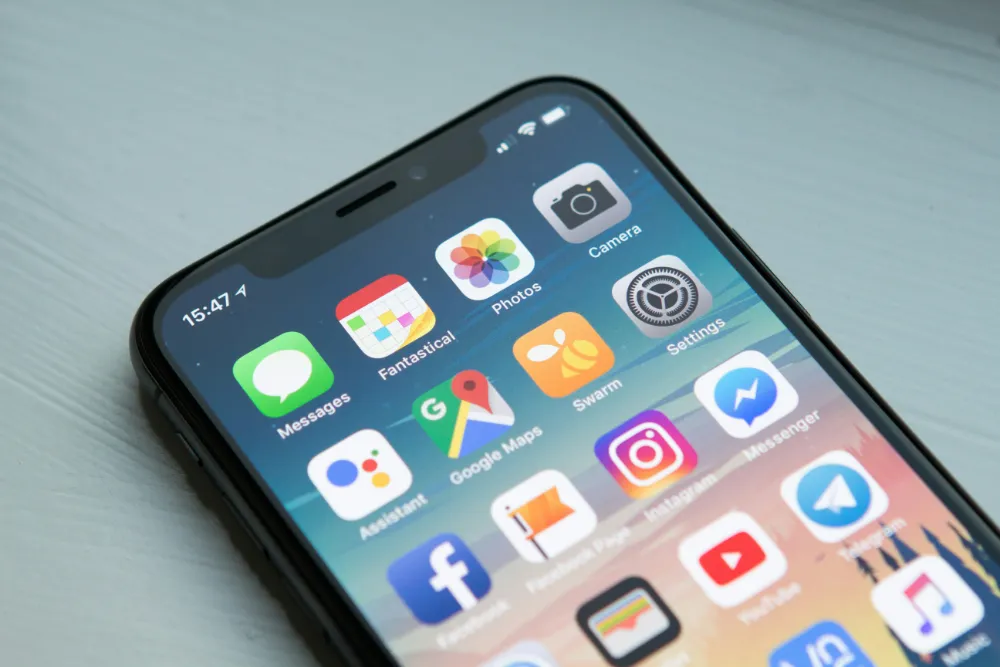eSIM
How Do I Delete eSIM From My iPhone?
Picture this: you’re getting ready for an international trip and need to switch your carrier, or maybe you’re troubleshooting connectivity issues with your current eSIM. Whatever your reason, knowing how to delete an eSIM from your iPhone is becoming an essential tech skill—especially if you travel frequently.
The good news? Removing an eSIM is actually much simpler than most people think.
In this guide, I’ll walk you through the entire process step by step, while also helping you understand when and why you might need to remove an eSIM in the first place.
The Quick Step-by-Step Guide to Delete an eSIM
Let’s start with what you came here for—the straightforward process of removing an eSIM from your iPhone:
- Open your iPhone Settings: Tap the Settings app on your home screen.
- Navigate to Cellular or Mobile Data: Depending on your region, this menu might have a slightly different name.
- Select the eSIM line you want to remove: If you have multiple eSIMs or a combination of physical SIM and eSIM, you’ll see them all listed here.
- Scroll down and tap “Remove Cellular Plan”: This option is usually at the bottom of the cellular plan details screen.
- Confirm your choice: Your iPhone will display a warning message about removing the plan. Read it carefully, then tap “Remove [Carrier] Plan” to confirm.
- Check for confirmation: You should receive a notification that your plan has been successfully removed.
That’s the basic process—but there’s a bit more you should know before you hit that “Remove” button.
Before You Delete: Important Preparations
Before removing an eSIM from your iPhone, it’s crucial to take a few precautions:
Backup Your Information
Your contacts and other data are typically stored on your iPhone, not your eSIM. However, it’s always a good idea to back up your iPhone to iCloud or your computer before making any significant changes to your device settings.
Understand What Happens to Your Phone Number
When you delete an eSIM, you’re removing that carrier’s service from your phone. If this is your primary line, you’ll lose the ability to make calls, send texts, or use cellular data through that number until you activate a new plan.
If you’re switching carriers but want to keep your number, make sure you’ve completed the transfer process before deleting your old eSIM.
Confirm You Have Alternative Connectivity
Make sure you have Wi-Fi access or another cellular plan active before removing your only source of connectivity. This is particularly important if you’re traveling and need to stay connected to download a new eSIM.
Why You Might Need to Delete an eSIM
Understanding when to delete an eSIM can help you better manage your device and connectivity needs:
Switching Carriers or Plans
If you’re changing to a new carrier or upgrading your plan with the same provider, you might need to remove your old eSIM to activate a new one—though in many cases, the activation process will handle this automatically.
International Travel
One of the biggest advantages of using an eSIM is the ability to quickly switch between carriers when traveling internationally. Rather than paying excessive roaming charges, you can delete your home carrier’s eSIM and install a local one for your destination.
For frequent travelers, this flexibility is invaluable—you can get connected in over 200 countries with affordable data rates instead of paying premium roaming fees.
Troubleshooting Connectivity Issues
Sometimes removing and reinstalling an eSIM can resolve connectivity problems, similar to how restarting your phone can fix minor glitches.
Managing Multiple Lines
iPhones can store multiple eSIMs, though only one or two can be active at once, depending on your model. If you’re reaching your limit, you might need to delete ones you no longer use. Want to know how many your specific model supports? Check out this guide on how many eSIMs can be used in iPhones.
Preparing Your Device for Resale
If you’re selling or giving away your iPhone, you’ll want to remove all personal information—including your eSIM plans.
Different iPhone Models and eSIM Support
Not all iPhones support eSIM technology, and the menu options might look slightly different depending on your model and iOS version:
- iPhone XS, XS Max, XR and newer: These models all support eSIM functionality.
- iPhone SE (2nd generation and newer): These also support eSIM.
- Older models: iPhones older than those listed above only support physical SIM cards.
Additionally, iPhone 14 models sold in the US are eSIM-only, with no physical SIM tray at all.
If your menus look different from what I’ve described, make sure your iOS is updated to the latest version. The general path remains similar across versions: Settings → Cellular/Mobile → Select eSIM → Remove Plan.
Common Problems When Deleting eSIMs
The Delete Option Is Grayed Out
If you can’t select “Remove Cellular Plan,” it might be because:
- The eSIM is your only active line with no Wi-Fi connection
- There’s a carrier restriction on the eSIM
- Your iPhone has a management profile installed by an organization
In these cases, connect to Wi-Fi first or contact your carrier for assistance.
Error Messages
If you receive an error when trying to delete your eSIM, try restarting your iPhone first. If that doesn’t work, make sure you’re connected to Wi-Fi and try again. Persistent errors might require contacting your carrier or Apple Support.
Deletion Doesn’t Seem to Work
If your plan still appears after deletion, force restart your iPhone. If it still persists, you may need to reset your network settings (though be aware this will remove all saved Wi-Fi networks and passwords).
Alternative Methods for Removing an eSIM
Reset Network Settings
As a last resort, you can reset all network settings by going to Settings → General → Transfer or Reset iPhone → Reset → Reset Network Settings. Remember, this will remove ALL your saved networks, not just the problematic eSIM.
Contact Your Carrier
Some carriers can remotely deactivate an eSIM from their end. This might be necessary if you’re having persistent issues removing it yourself.
Using Carrier Apps
Many carriers now offer apps that can help manage your eSIM, including removal and replacement. Check if your provider offers such an app.
After Deletion: Next Steps for Travelers
Once you’ve successfully removed your eSIM, you’ll likely want to install a new one—especially if you’re traveling. Here’s what to know:
Installing a New eSIM
To install a new eSIM, you’ll typically either:
- Scan a QR code provided by your carrier
- Use a carrier app to activate it directly
- Click an activation link in an email (which is how services like eSIM4 deliver their plans)
The process is usually quick and straightforward, allowing you to get connected in minutes rather than hunting for a physical SIM card.
Stay Connected While Traveling
To avoid roaming charges while traveling, consider purchasing a travel eSIM before you leave. With services like eSIM4, you can buy your plan in advance, set it up before departure, and it will automatically connect when you arrive at your destination.
This advance preparation ensures you’re never without connectivity when you need it most—whether for navigation, translation, or staying in touch with loved ones back home.
Final Thoughts
Managing your eSIMs is becoming an increasingly important skill, especially for the frequent traveler. The ability to quickly switch between carriers without physically swapping SIM cards represents a major leap forward in convenience and flexibility.
The deletion process, as we’ve seen, is relatively straightforward—but understanding the context and implications helps ensure you don’t accidentally disconnect yourself at a critical moment.
Remember, if you’re preparing for international travel, services like eSIM4 offer convenient, affordable data plans for over 200 countries that auto-connect on arrival. With 24/7 support and a simple setup process that works via QR code or email link, managing your connectivity while abroad has never been easier.
The next time you find yourself asking “How do I delete eSIM from my iPhone?” you’ll know exactly what to do—and more importantly, you’ll understand why and when to do it.







